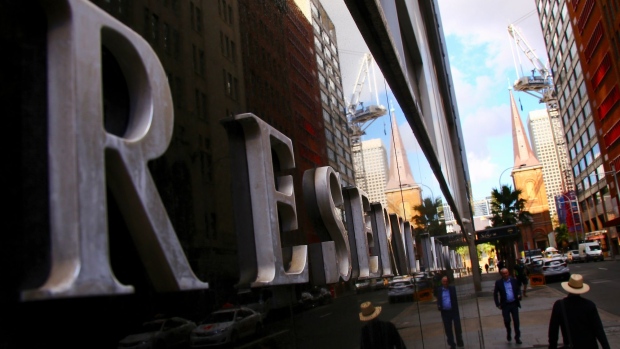Jul 15, 2019
RBA Monitoring Job Market ‘Closely,’ to Adjust Rates If Needed
, Bloomberg News

(Bloomberg) -- Australia’s central bank is focused on the jobs market and said it will adjust policy if needed to support economic growth and keep inflation on track to return to target.
In minutes of its July 2 meeting, when it cut interest rates for a second month to a record-low 1%, the Reserve Bank noted wages growth remained low overall and “spare capacity was likely to remain in the labor market for some time.”
The easing would “promote stronger overall economic conditions,” it said Tuesday. “The extent of spare capacity in the economy, and the likely pace at which it would be absorbed, meant that a decline in interest rates was unlikely to encourage and unwelcome material pick-up in borrowing by households.”
Governor Philip Lowe executed the first back-to-back rate cuts in seven years in June-July, citing the bank’s estimate that unemployment could fall to about 4.5% before triggering faster inflation. He had kept the cash rate on hold for almost three years prior in an effort to deflate a property bubble and discourage heavily-indebted households taking on more leverage.
The Australian dollar was little changed after the release, trading at 70.40 U.S. cents at 11:36 a.m. in Sydney.
Currency Crunch
While the RBA has conceded rate cuts at this level show diminishing returns, it expects the two reductions to lower the currency’s level and free up cash for consumers and firms. Yet the former is in increasing doubt as major central banks from Washington to Tokyo to Brussels are also now easing, and not everyone can have a weaker exchange rate.
Board members noted “the significant change in the expected path of monetary policy around the world, particularly in the U.S.,” the minutes said.
While the RBA is looking to push down unemployment from the current 5.2% level, it also acknowledged that forward-looking indicators suggest employment growth “would moderate over coming months.” While Australia has enjoyed a jobs boom in the past two years, it has been absorbed by a higher participation rate rather than a lower unemployment rate.
The RBA noted the jobless rates in major advanced economies were at “historically low levels” and yet this had failed to translate into faster inflation, as Australia is also finding.
The bank reiterated in its concluding paragraph: “the board would continue to monitor developments in the labor market closely and adjust monetary policy if needed to support sustainable growth in the economy and the achievement of the inflation target over time.”
Growth slowed in recent quarters under as households reined in spending in response to falling property prices. These have begun to stabilize and the RBA’s bullish case is that a combination of this, interest-rate and tax cuts, infrastructure expansion and renewed resource investment will revive the economy.
To contact the reporter on this story: Michael Heath in Sydney at mheath1@bloomberg.net
To contact the editors responsible for this story: Nasreen Seria at nseria@bloomberg.net, Victoria Batchelor
©2019 Bloomberg L.P.